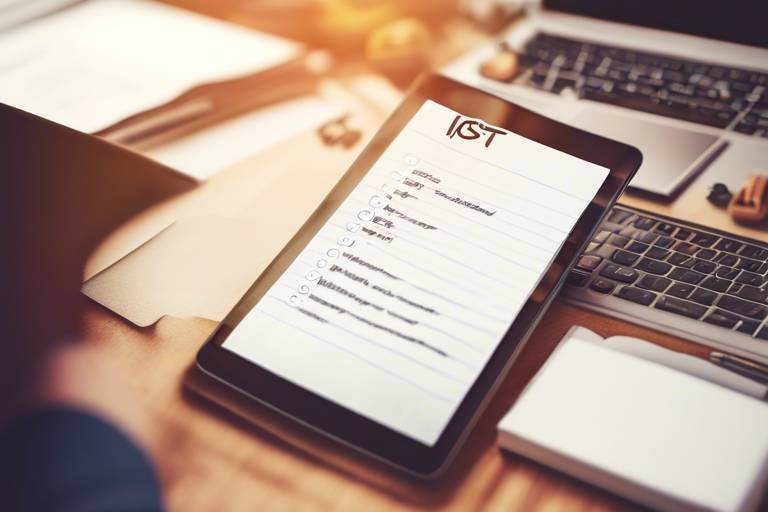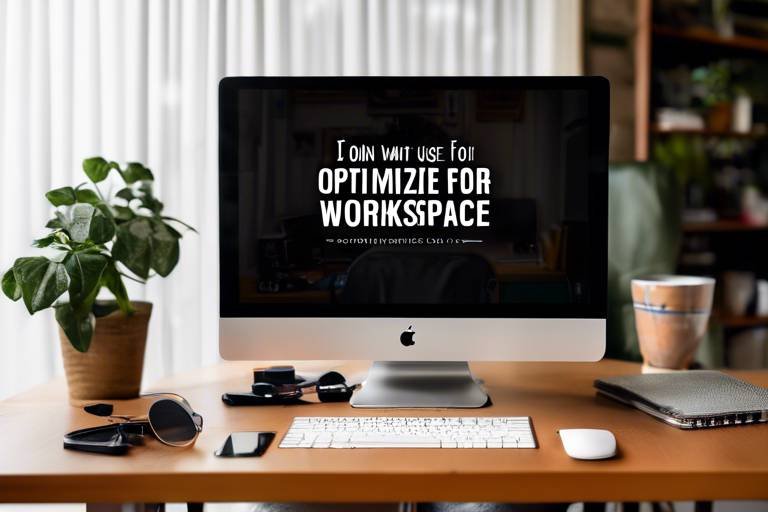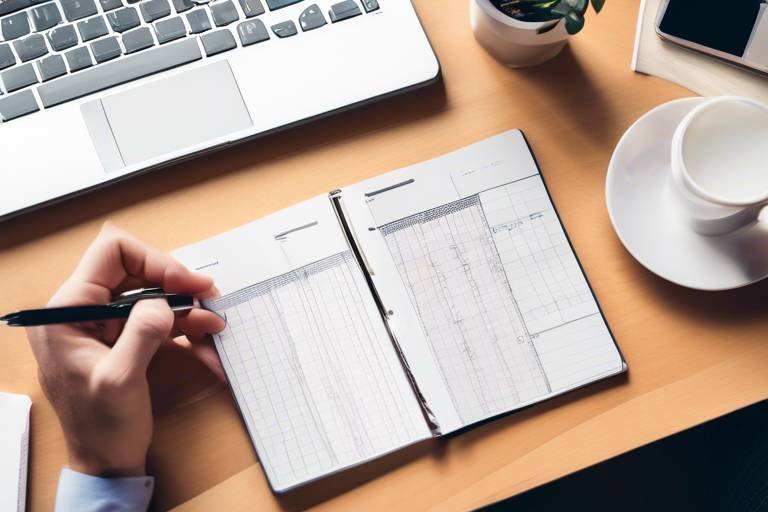How to Use Focus Strategies to Improve Your Work Efficiency
Improving work efficiency is a goal that many individuals strive for in today's fast-paced world. By implementing effective focus strategies, individuals can enhance their productivity and achieve their work goals more efficiently.
Setting clear goals is a fundamental step in improving focus. By establishing specific and achievable objectives, individuals can create a roadmap for their tasks, enabling them to prioritize effectively and manage their time efficiently.
Distractions are often a significant hindrance to focus. Eliminating interruptions such as phone notifications, clutter, and multitasking can greatly enhance concentration levels. Creating a distraction-free work environment fosters better engagement with tasks and boosts overall productivity.
Time blocking is a valuable technique for maintaining focus throughout the day. By dividing the day into dedicated time blocks for different activities, individuals can optimize their energy and attention, leading to increased productivity and task completion.
The Pomodoro Technique is a popular method for enhancing focus and productivity. By working in focused intervals followed by short breaks, individuals can break tasks into manageable segments, promoting sustained concentration and efficient work completion.
Practicing mindfulness can also significantly improve focus. Techniques such as deep breathing and meditation help individuals center their attention and reduce mental clutter, allowing for better engagement with tasks and increased productivity.
The Two-Minute Rule is a simple yet effective strategy for maintaining focus. By completing tasks that take less than two minutes immediately, individuals can avoid procrastination and prevent small tasks from piling up, enabling them to focus on more significant priorities.
Creating a productive routine is key to enhancing focus and productivity. By establishing a structured daily schedule with regular habits and rituals, individuals can streamline their workflow and optimize their work efficiency.
Regular breaks play a crucial role in maintaining focus and preventing burnout. Taking short intervals of rest between work sessions can rejuvenate the mind, improve concentration levels, and ultimately enhance overall work efficiency.

Setting Clear Goals
This article explores various focus strategies that can help individuals enhance their work efficiency and productivity. By implementing these techniques, individuals can better concentrate on tasks and achieve their goals effectively.
Establishing specific and achievable goals provides a clear direction for work tasks and enhances focus. By outlining objectives, individuals can prioritize their activities and allocate time efficiently to accomplish them.

Eliminating Distractions
This article explores various focus strategies that can help individuals enhance their work efficiency and productivity. By implementing these techniques, individuals can better concentrate on tasks and achieve their goals effectively.
Establishing specific and achievable goals provides a clear direction for work tasks and enhances focus. By outlining objectives, individuals can prioritize their activities and allocate time efficiently to accomplish them.
When it comes to boosting work efficiency, one of the key strategies is eliminating distractions. Distractions can come in various forms, such as constant phone notifications, cluttered workspaces, or the temptation to multitask. These interruptions can significantly hamper concentration levels, making it challenging to focus on the task at hand.
To combat distractions effectively, creating a serene and distraction-free work environment is crucial. By decluttering your workspace, turning off unnecessary notifications, and avoiding multitasking, you can enhance your focus and engage more effectively with your work.
Segmenting your day into dedicated time blocks for different tasks is a powerful technique to maintain focus and boost productivity. By allocating specific periods for work, breaks, and leisure activities, you can optimize your energy levels and attention throughout the day.
The Pomodoro Technique is a popular time management method that involves working in focused intervals followed by short breaks. By breaking down tasks into manageable segments and focusing on them for a set period, individuals can enhance their productivity and combat distractions effectively.
Mindfulness practices, such as deep breathing exercises and meditation, can help individuals center their attention and reduce mental clutter. By cultivating present-moment awareness, individuals can enhance their focus, improve concentration levels, and engage more effectively with their tasks.
The Two-Minute Rule is a simple yet effective strategy that suggests completing tasks that take less than two minutes immediately. By addressing small tasks promptly, individuals can prevent them from piling up and causing distractions, allowing them to maintain focus on more significant priorities.
Establishing a structured daily routine can significantly enhance focus and productivity levels. By incorporating regular habits and rituals into your day, you can streamline your workflow, eliminate decision fatigue, and optimize your work efficiency.
Regular breaks are essential for maintaining focus and preventing burnout. Short intervals of rest between work sessions can rejuvenate the mind, improve concentration levels, and enhance overall work efficiency. Remember, breaks are not a sign of laziness but a crucial component of a productive work routine.
Stay tuned for the FAQ section coming soon!

Time Blocking
Time blocking is a powerful strategy that involves dividing your day into specific blocks of time dedicated to different tasks or activities. By scheduling focused periods for work, breaks, and personal tasks, individuals can enhance their productivity and efficiency.
When implementing time blocking, it's essential to prioritize tasks based on their importance and urgency. By allocating specific time slots for each activity, you can ensure that your attention is fully dedicated to the task at hand without distractions or interruptions.
One effective way to utilize time blocking is to create a daily schedule outlining the tasks you need to accomplish and assigning time blocks for each one. This structured approach helps in managing your time effectively and ensures that you make progress on all essential activities throughout the day.
Moreover, time blocking allows you to optimize your energy levels by aligning tasks with your peak performance hours. By scheduling challenging or high-focus tasks during your most productive times, you can maximize your efficiency and achieve better results.
By incorporating breaks between time blocks, you can prevent burnout and maintain a healthy work-life balance. Short intervals of rest enable you to recharge and refocus, leading to improved concentration and overall work efficiency.
Overall, time blocking is a valuable technique for enhancing focus, productivity, and time management. By structuring your day into dedicated blocks of time, you can make the most of your work hours, accomplish tasks efficiently, and achieve your goals effectively.

Utilizing the Pomodoro Technique
This article explores various focus strategies that can help individuals enhance their work efficiency and productivity. By implementing these techniques, individuals can better concentrate on tasks and achieve their goals effectively.
Establishing specific and achievable goals provides a clear direction for work tasks and enhances focus. By outlining objectives, individuals can prioritize their activities and allocate time efficiently to accomplish them.
Reducing interruptions such as phone notifications, clutter, or multitasking can significantly improve concentration levels. Creating a distraction-free work environment enhances focus and allows for better engagement with tasks at hand.
Segmenting the day into dedicated time blocks for different tasks helps in maintaining focus and productivity. By allocating specific periods for work, breaks, and leisure, individuals can optimize their energy and attention throughout the day.
The Pomodoro Technique involves working in focused intervals followed by short breaks. This method enhances productivity by breaking tasks into manageable segments, allowing for sustained concentration and efficient work completion.
Mindfulness techniques, such as deep breathing or meditation, can help individuals center their attention and reduce mental clutter. By cultivating present-moment awareness, individuals can enhance focus and engage more effectively with tasks.
The Two-Minute Rule suggests completing tasks that take less than two minutes immediately. This strategy minimizes procrastination and prevents small tasks from accumulating, enabling individuals to maintain focus on more significant priorities.
Establishing a structured daily routine can enhance focus by providing a consistent framework for work activities. By incorporating regular habits and rituals, individuals can streamline their workflow and optimize their productivity levels.
Regular breaks are essential for maintaining focus and preventing burnout. Short intervals of rest between work sessions can rejuvenate the mind, improve concentration levels, and enhance overall work efficiency.

Practicing Mindfulness
Mindfulness techniques play a crucial role in improving focus and concentration levels. By incorporating practices such as deep breathing exercises and meditation into daily routines, individuals can cultivate a sense of present-moment awareness. This heightened awareness allows individuals to acknowledge distractions without becoming consumed by them, enabling a more focused approach to work tasks.
Imagine mindfulness as a mental reset button, clearing away the clutter of thoughts and worries that often hinder productivity. It's like decluttering a messy desk, creating space for important tasks to take center stage. By practicing mindfulness, individuals can train their minds to stay grounded in the present moment, fostering a deep connection with the task at hand.
Furthermore, mindfulness techniques can help individuals manage stress and anxiety, which are common factors that disrupt focus. By learning to observe thoughts and emotions without judgment, individuals can redirect their attention back to the present moment, improving their ability to concentrate on work tasks effectively.
Integrating mindfulness practices doesn't have to be time-consuming; even a few minutes of focused breathing or a short meditation session can make a significant difference in enhancing focus and productivity. By making mindfulness a regular part of their routine, individuals can sharpen their mental clarity and boost their overall work efficiency.

Implementing the Two-Minute Rule
The Two-Minute Rule is a powerful strategy that can revolutionize your approach to task management. This rule suggests that any task taking two minutes or less to complete should be done immediately without delay. By swiftly addressing these quick tasks, you prevent them from piling up and consuming valuable mental space. This proactive approach minimizes procrastination and allows you to maintain focus on more substantial priorities.
Imagine your to-do list as a battlefield, with each task fighting for your attention. The Two-Minute Rule acts as your swift and decisive commander, ensuring that minor skirmishes are resolved swiftly, leaving you free to concentrate on winning the major battles. By implementing this rule, you create a sense of momentum and accomplishment, propelling you towards your overarching goals with efficiency and clarity.
Consider the Two-Minute Rule as your secret weapon in the war against distractions and procrastination. It acts as a shield, protecting your focus from being scattered across trivial tasks. By swiftly dispatching these minor duties, you create a clear path for your mind to engage deeply with the critical aspects of your work. This rule empowers you to conquer the chaos of daily responsibilities and emerge victorious in your pursuit of productivity.
Integrating the Two-Minute Rule into your daily routine can be a game-changer, transforming how you approach your workload. By embracing this strategy, you cultivate a habit of immediate action and decisiveness. As you consistently apply this rule, you will witness a significant reduction in mental clutter and a remarkable increase in your ability to concentrate on essential tasks. Embrace the simplicity and effectiveness of the Two-Minute Rule, and watch as it propels you towards greater productivity and success.

Creating a Productive Routine
Establishing a productive routine is like building a strong foundation for a skyscraper. Just as a solid base supports the entire structure, a well-structured daily routine can uphold your work efficiency and productivity. Imagine your routine as a well-choreographed dance, each step leading seamlessly to the next, ensuring a harmonious flow of tasks and activities.
One way to create a productive routine is by setting specific time slots for different types of work. Designate mornings for tasks requiring high concentration and creativity, while afternoons can be reserved for meetings, emails, or administrative duties. By segmenting your day effectively, you can align your energy levels with the demands of each task, maximizing productivity.
Additionally, incorporating regular breaks into your routine is crucial. Just as a car needs pit stops to refuel and recharge, your mind also requires moments of rest to maintain peak performance. Short breaks allow you to step back, re-energize, and return to work with renewed focus and clarity.
Furthermore, integrating healthy habits into your daily routine can boost productivity. Whether it's starting the day with exercise, practicing mindfulness techniques, or maintaining a balanced diet, taking care of your physical and mental well-being can enhance your overall work efficiency.
Consistency is key when it comes to creating a productive routine. By sticking to a set schedule and following through with your planned activities, you build momentum and discipline that propel you towards your goals. Remember, Rome wasn't built in a day, and neither is a productive routine. It takes time, dedication, and a commitment to self-improvement.

Taking Regular Breaks
Regular breaks are essential for maintaining focus and preventing burnout. In a fast-paced work environment, it's easy to get caught up in tasks and forget to give your mind a rest. Just like a car needs pit stops during a race to perform at its best, our brains also require breaks to recharge and stay productive. Taking short intervals of rest between work sessions can do wonders for your mental clarity and overall efficiency.
Imagine your brain as a muscle that needs time to recover after intense exercise. By taking regular breaks, you allow your mind to relax, reset, and come back stronger for the next task. Whether it's a quick walk around the office, a brief stretch, or a moment to enjoy a cup of tea, these breaks can help you refocus and approach your work with renewed energy.
Research shows that prolonged periods of continuous work can lead to decreased cognitive function and increased stress levels. By incorporating short breaks into your work routine, you give yourself the opportunity to step back, assess your progress, and come back with a fresh perspective. It's not about working harder but working smarter by allowing your mind to rest and recharge periodically.
Moreover, regular breaks can enhance creativity and problem-solving skills. When you step away from your work for a few minutes, you give your brain the chance to process information subconsciously. This can lead to innovative ideas, new perspectives, and improved decision-making when you return to your tasks. So, don't underestimate the power of taking a breather in boosting your productivity and overall work performance.
Frequently Asked Questions
- What is the importance of setting clear goals in improving work efficiency?
Setting clear goals provides a roadmap for work tasks, helping individuals prioritize and allocate time effectively. It enhances focus by giving a sense of direction and purpose, leading to increased productivity.
- How does eliminating distractions contribute to better work efficiency?
Eliminating distractions such as phone notifications and multitasking allows individuals to concentrate fully on tasks at hand. A distraction-free environment enhances focus, leading to improved engagement and task completion.
- Can you explain the benefits of time blocking for work efficiency?
Time blocking involves segmenting the day into dedicated time slots for different tasks, aiding in maintaining focus and productivity. By allocating specific periods for work, breaks, and leisure, individuals can optimize their energy and attention throughout the day.
- What is the Pomodoro Technique and how does it help in enhancing work efficiency?
The Pomodoro Technique involves working in focused intervals followed by short breaks. This method helps in breaking tasks into manageable segments, promoting sustained concentration and efficient work completion, thereby improving productivity.
- How does practicing mindfulness contribute to improving work efficiency?
Mindfulness techniques like deep breathing and meditation help individuals center their attention and reduce mental clutter. By cultivating present-moment awareness, individuals can enhance focus, reduce stress, and engage more effectively with tasks.



















